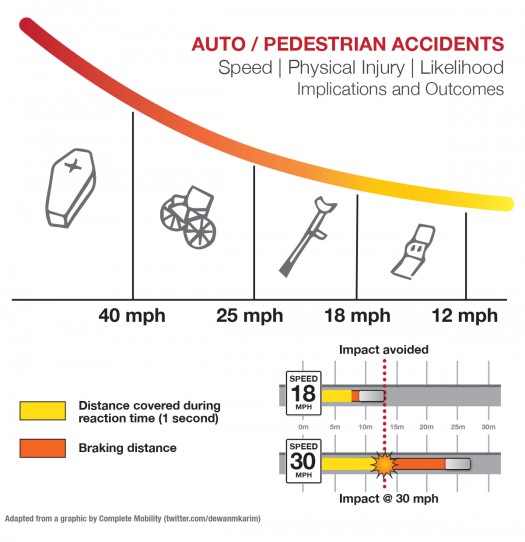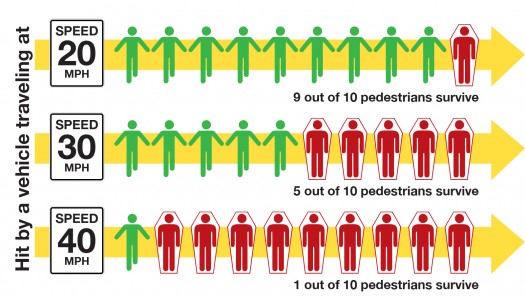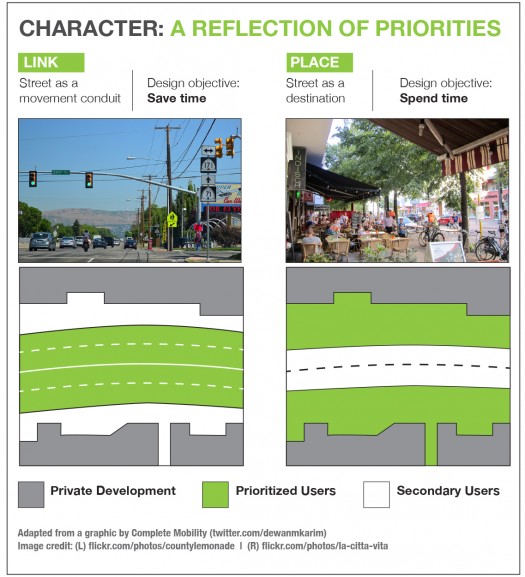A Placemaking Journal
Better Streets: Whatchu whatchu whatchu want?
 “What a bunch of idiots. Don’t they know this will create a traffic nightmare?”
“What a bunch of idiots. Don’t they know this will create a traffic nightmare?”
Sound familiar? It’s the most commonly voiced complaint any time the community conversation turns to traffic calming.
Taken at face value, it’s not an outrageous sentiment. After all, when you’re out and about, anything that stands between you and where you want to be looks like a problem. So why on earth would anyone choose to further complicate your commute on purpose?
I don’t blame them. Most people alive today have been told for their entire lives that infrastructure upgrades occur to ease congestion and, by that measure, the reduction of lanes does seem sort of, well, stupid, right?
But here’s the thing: Traffic calming isn’t done to ease congestion. That’s not the problem it’s trying to solve. If that’s surprising news to the community, one of two things has likely taken place: Either leadership has done a poor job of articulated and validating a particular vision; or infrastructure investments are being made outside the participation of the community.
Hell, sometimes it’s even both.
Let’s start at the beginning
The right-of-way, as it exists from property line to property line, is public space, which means that we, the public, can divvy it up any way we want. Long before money gets released and design schematics surface, that’s the conversation we need to have. What kind of space do we want this to be?
(From time to time I’ll come across great illustrative graphics on social media, then get annoyed that they’re small or of insufficient resolution to print or use in presentations. This week, I took some time to rebuild a number for this post and am including them all at a large, useful size. Feel free to use, link or otherwise circulate.)
Complete Mobility suggests looking at our built environment in terms of either Links, in which movement is prioritized, or Places, in which destination space takes precedence. Each has design best practices to serve its larger respective goal. In a Link environment, the design objective is to save time. In a Place, it’s to spend time. Neither is a value judgment. It’s just a decision that needs to be made one way or another.
This graphic explains:
Once you’ve narrowed down the context that defines your objectives, then you can get down to the decisions that flow from there. In a Links environment, you’ll face questions like: Are we seeking maximized automotive throughput (your classic car sewer scenario), or do we want a more humane and equitable environment in which facilities exist to serve all users, from cars to bikes to those on foot or with assisted mobility? What are the advantages and negative impacts associated with each?
That’s even a conversation that most DOTs are now equipped to participate in. But sometimes communities have a different realization. Such as: Why do we care if people can pass through our community faster on their way to somewhere else? First and foremost, our streets should be engineered to serve us, the surrounding community.
When that’s the case, you’re talking about the public realm as a Place rather than a Link. Which means a totally different set of criteria takes over.
In a Place, automobiles might be accommodated but they are not prioritized. Human scale and comfort are what rule, and all subsequent design decisions reflect that.
First and foremost in that consideration is speed. Simply put, people places don’t function with high speeds. If you constrict capacity but do nothing to reduce speeds, you’re investing a whole lot of money in a lose-lose scenario.
Why is speed so important? Because if people don’t feel safe, they don’t hang out. If they don’t hang out, it’s not really a people place now, is it?
So why don’t they feel safe in the presence of higher speeds? These two graphics do a great job of explaining:

Original image from Complete Mobility (Twitter user @dewanmkarim). Adapted for US measurements. Click for larger view. Now available in metric as well.

Adapted from a graphic at www.gjel.com. Click for larger view. Now available in metric as well.
There you go. When people drive fast, pedestrians are injured more severely and die in greater numbers. Which is not a particularly enticing prospect when you’re trying to get people to treat the street as a shared public resource.
Why we get confused
Generally speaking, traffic engineers only see Links, so when they talk about safety, they’re looking at ways to reduce accidents without compromising throughput. That’s car-first safety. It has its place in certain contexts, but people places are not one of them. People places require safety measures that put pedestrian safety and comfort first.
Failing to begin any change in infrastructure with a community conversation of Link vs. Place will result in all the public confusion and outrage we’ve come to expect. And why not? We all know such discontent stems from unmet expectations and our expectation as a culture, which has been reinforced for more than a half century, is that we spend money to ease congestion to help us get where we’re going faster.
Sometimes that’s still the case, but sometimes it’s not. That’s why the conversation is so important. Without it, you end up like Gainesville, Florida (where they installed and are now removing bike lanes) or Denver’s new urban community of Stapleton (where a failure to adhere to the distinctions of Link and Place has left them transportationally confused).
You can’t be all things to all people. No one expects that. But you can minimize conflict when you define what kind of street you want up front, then commit to the path that’ll get you there.
Further resources
It’s worth noting that transportation decisions don’t just impact mobility. Or lifestyle. So those shouldn’t be the only factors in the discussion. Transportation policy also plays a huge role in associated development models and our friends at Strong Towns have done tremendous work quantifying the economic returns associated with different development patterns. Spoiler alert: A lot of the conventional wisdom peddled by politicians is wrong. Flat out wrong.
Finally, once you get the big question of context answered, you eventually work your way down to the very granular details of design. To that end, the book to read is Street Design: The Secret to Great Cities and Towns by John Massengale and Victor Dover.
If PlaceShakers is our soapbox, our Facebook page is where we step down, grab a drink and enjoy a little conversation. Looking for a heads-up on the latest community-building news and perspective from around the web? Click through and “Like” us and we’ll keep you in the loop.



